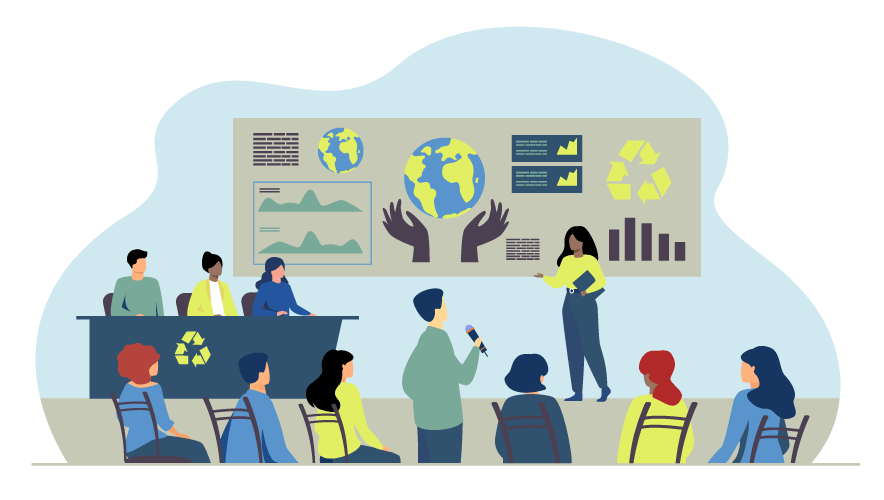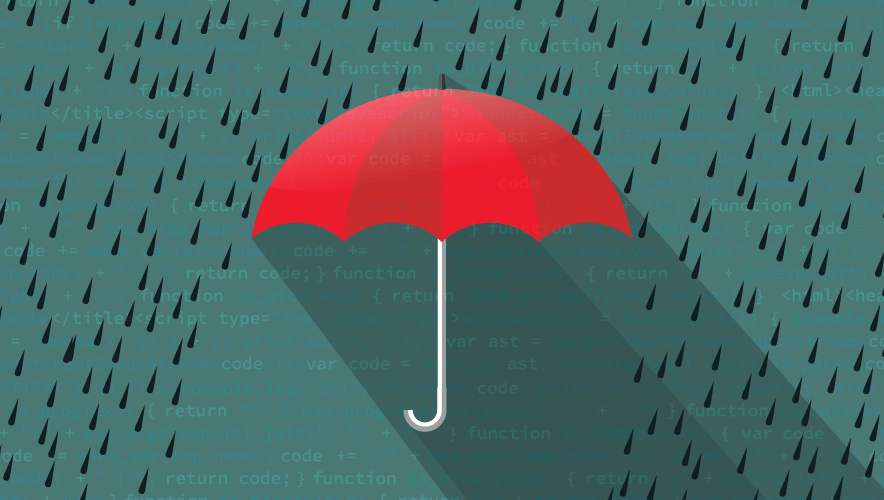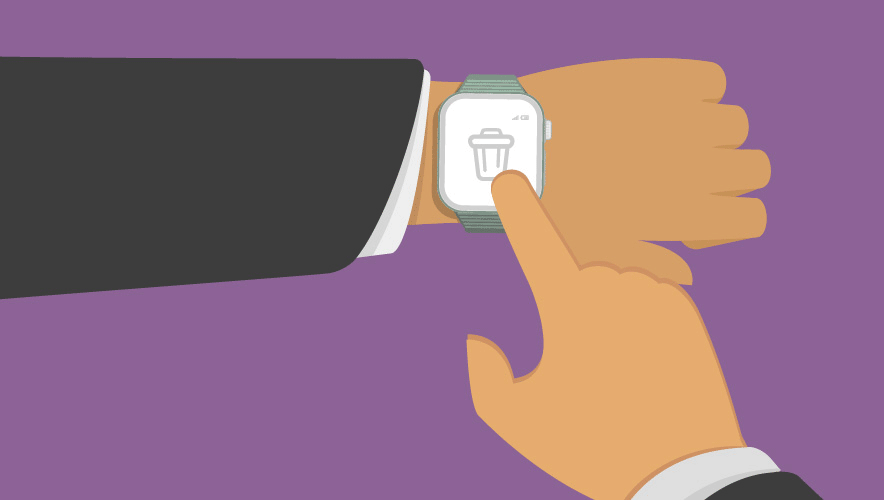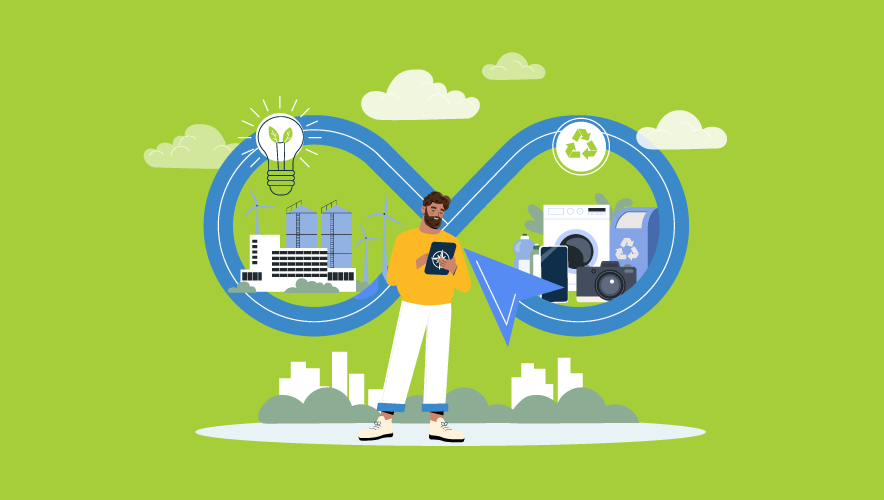Sustainability in the Security Industry: Everyone Has a Role to Play
Helping to create a more sustainable world requires leadership with a long-term commitment to acting responsibly. Although the security industry may not be considered a leader in sustainability when compared with others, such as consumer electronics, many in the industry have made great strides. Still, there’s more that we can do when it comes to setting, meeting—and even exceeding—sustainability goals.
“To pursue sustainability is to create and maintain the conditions under which humans and nature can exist in productive harmony to support present and future generations,” according to the U.S. Environmental Protection Agency. There are many definitions of sustainability, but all have one thing in common: a brighter future for humankind.
How can someone in the security industry be part of a sustainability effort, especially if his or her employer doesn’t produce any products but only sells and installs them? To start, it’s important to understand that throughout the industry—from suppliers to the general public—we are all part of a connected ecosystem, and we all have a part to play in making our planet a better domain.
Building Trust is Key
A major step that some security manufacturers have taken, was to sign the United Nations Global Compact. Axis signed in 2007. The compact brought together UN agencies and other stakeholders to advance 10 universal principles in the areas of human rights, labor, environment, and anti-corruption. What’s more, the UN’s 2030 Agenda and its 17 Global Sustainable Development Goals (SDGs), serve as a blueprint for peace and prosperity for people and the planet.
It’s not okay to just have a “take-make-break” approach to resources. All organizations need to take responsibility. That goes for the whole value chain, both upstream and downstream. Downstream, distributors and system integrators, and end users should also address this, and place demands on their upstream suppliers.
For Axis, a key concept when it comes to “downstream partners” is trust. When an integrator or end user chooses technology from our company, they need to trust that they are getting the best products and trust that those products were made in a sustainable manner. For instance, that we are not contributing to excessive pollution in the supply chain or using forced labor to manufacture products.
As our CEO Ray Mauritsson said in our Axis 2021 Sustainability Report, “We know that caring for people and the environment, and running our business in an ethical manner is the right thing to do—and that it also makes good business sense.”
When it comes to protecting the planet, it’s essential to work hard to minimize environmental impact across the whole value chain. Our work in this area is focused on beating climate change, protecting natural resources, and protecting ecosystems.
Beat Climate Change
Recently Axis committed to Science Based Targets initiative (SBTi), an organization that drives ambitious climate action in the private sector by enabling organizations to set science-based emissions reduction targets. These targets provide a clearly defined pathway for companies and institutions to reduce greenhouse gas emissions, helping prevent the worst impacts of climate change and future-proof business growth, according to the group.
In addition to focusing on the environmental impacts associated with manufacturing or transporting products, it’s also important to work diligently to innovate technologies that lower energy consumption—and therefore CO2 emissions—of products and solutions. One example at Axis is our ARTPEC-8 system-on-chip. By using a more power-efficient technology, it can deliver a 1080p30 stream using 40 percent less energy than ARTPEC-7 under the same conditions.
Protect Natural Resources
When it comes to protecting natural resources, one approach is transforming from a linear “take-make-break” model to a circular model of “make-use-reuse” (or recycle or remake). When we design products, we have a responsibility to make sure we use as much recycled material or renewable material as possible. Our goal is for 20 percent of all plastics used in products to be renewable carbon-based plastics by 2024.
In 2021, we launched three products containing renewable carbon-based plastics: AXIS P3818-PVE, AXIS Q1656 and AXIS Q1656-LE. AXIS Q1656 is the first product series containing the bio-based plastic EcoPAXX: a high-performance polyamide, which is made from renewable castor bean oil and is carbon-neutral.
The circular model also involves resource conservation, utilizing as little material as possible and ensuring that as little waste as possible is generated during the manufacturing of the product. Attention should be paid to designing products that can be repaired if they break, maintaining the value of the materials over time and resulting in a long use life.
Our engineers observe the company’s green design principles by completing a green design evaluation form for each new product development project. This helps them emphasize factors such as the use of recyclable materials and energy efficiency, and helps teams monitor their green choices. It also drives continuous improvement of green designs—making the next design greener than its predecessors.
Protect Ecosystems
Another aspect of protecting the planet involves striving to eliminate the use of hazardous substances that may harm ecosystems or people. Employing systematic procedures, such as the green design evaluation form, for product development, selection, and origin of materials, components, and packaging ensures that these meet quality and functionality standards as well as sustainability requirements. We have set ambitious targets to reduce brominated flame retardants (BFR) and chlorinated flame retardants (CFR). Our goal is that all indoor cameras launched in 2022 and all cameras launched in 2024 be BFR/CFR free.
In addition, polyvinyl chloride (PVC) can emit toxic substances that are harmful to both human health and the environment. Many of the phthalates that are used to make PVC materials soft have been banned or are under investigation. There is no legal requirement—PVC is legal to use—but when the chlorine is combusted it may generate dioxin, a known environmental pollutant. Approximately 90 percent of Axis network cameras and encoders launched in 2021 are PVC-free. The goal is that 100 percent of all launched Axis products should be PVC-free by 2025.
Companies like Apple, Sony, HP, Dell, and others in consumer electronics have had halogen-free (BFR/CFR-free) products for a long time. These substances are carcinogenic, and some are bio-accumulative and bad for reproduction—it depends on the substance, but they have different detrimental effects on humans or on nature. Overall, the security industry can do a better job when it comes to many of these substances, including being faster in abandoning their use.
We All Have a Responsibility
These are all good examples of the kinds of goals that manufacturers can set and attain, and ways in which security integrators and end users can hold their suppliers accountable to the environment and other aspects of sustainability.
At the very least, it’s important to make sure that when products are decommissioned, that they are handled in a responsible and sustainable way. Unfortunately, the vast majority of electronics are not managed properly and often end up in landfills. The next step, as countries—and our industry—mature in sustainability work, is developing recycling networks that allow components to be reused, instead of being re-manufactured.
There’s no doubt that sustainable work practices offer many benefits—environmental, economic, and social—to manufacturers, integrators, end users alike, but to reap these rewards we must all do our part. It’s only then that we can advance the ultimate goal of sustainability: meeting the needs of the present without compromising the needs of the future.
Carl Trotzig is director of Quality & Environment, Axis Communications, AB, where he is responsible for securing the product quality that Axis delivers and for the company’s environmental performance. Trotzig has more than 20 years of experience in driving improvements within quality and environmental performance. When not at work, he tries to spend as much time as possible outdoors, from skiing down the slopes of the Swedish mountains to gardening and barbequing.
© 2022 Axis Communications, AB












